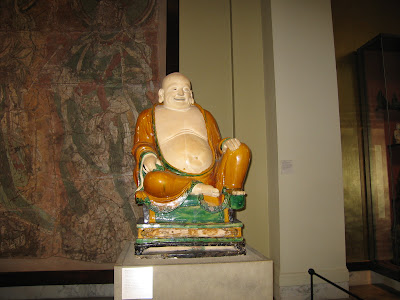Aztecs ancient civilization (14-16 centuries), which is inhabited areas of Mexico. Their population was over 1.5 million people. Aztec civilization has a rich mythology and cultural heritage. The capital of the Aztec empire was Tenochtitlan, and was located on Lake Tekskoko where now is Mexico City.
The name Aztecs comes from the Aztec Atstlan - their mythical homeland, located north of the Mexican valley (probably in the western part of Mexico), where he later migrated to the Aztecs in Central America. The Aztecs called themselves often meshika (Mexicali) - on behalf of the largest and most powerful tribe in the Indian community in the region and from that comes the name of Mexico. It is customary to call the Aztecs as the founders of the Aztec empire, and all other ethnic groups who speak Nahuatl (the Aztec language) and living in the Valley of Mexico to the conquest by the Spaniards.
The Aztec empire was strongest in Central America, known for its riches and traditions. In less than a century the Aztecs established their authority over a vast territory extending north to the central part of Mexico to the east - to the Gulf of Mexico to the south - to the present Guatemala and west to the Pacific coast. Capital, Tenochtitlan, on which there is today the capital of Mexico (Mexico City) was one of the biggest cities in the world at that time. Aztec culture is complex and their language, legends and traditions to this day have a big impact on the life and culture of Mexico.
Since agriculture is the main livelihood for the Aztecs, they were totally dependent on natural forces, so they are worshiped as gods. Foremost among the gods was Huitzilopochtli (god of the sun), also revered as the god of war. Other important gods Tlalok (rain god) and Quetzalcoatl ("Feathered Serpent") - the god of wind and wisdom, and also associated with resurrection.
In Aztec religion has good and evil gods. The Aztecs believed that good gods have always maintained strong to prevent the evil gods to conquer the world. For this purpose, perform human sacrifices. For most victims were often used prisoners of the war and the most important rituals is sometimes chosen for volunteers Aztec warriors. The Aztecs believed that God Tlalok prefers children, offered in sacrifice.
Sacrifice among the Aztecs represented complex rituals performed according to the movement of the stars of appeasement to the gods at a time. The most common ritual taken place in the following order: The victim climbed the stairs to the top of the pyramid, where the temple. There the priest puts her to bed, and the stone altar and brings a heart. Then he rose high to worship God and throws it into the sacred fire while it is still beating. Aztecs frequently conducted mass massacres. According to legend, in 1487 in Tenochtitlan priests sacrificed more than 80,000 prisoners in honor of the renovated temple of the sun god.






